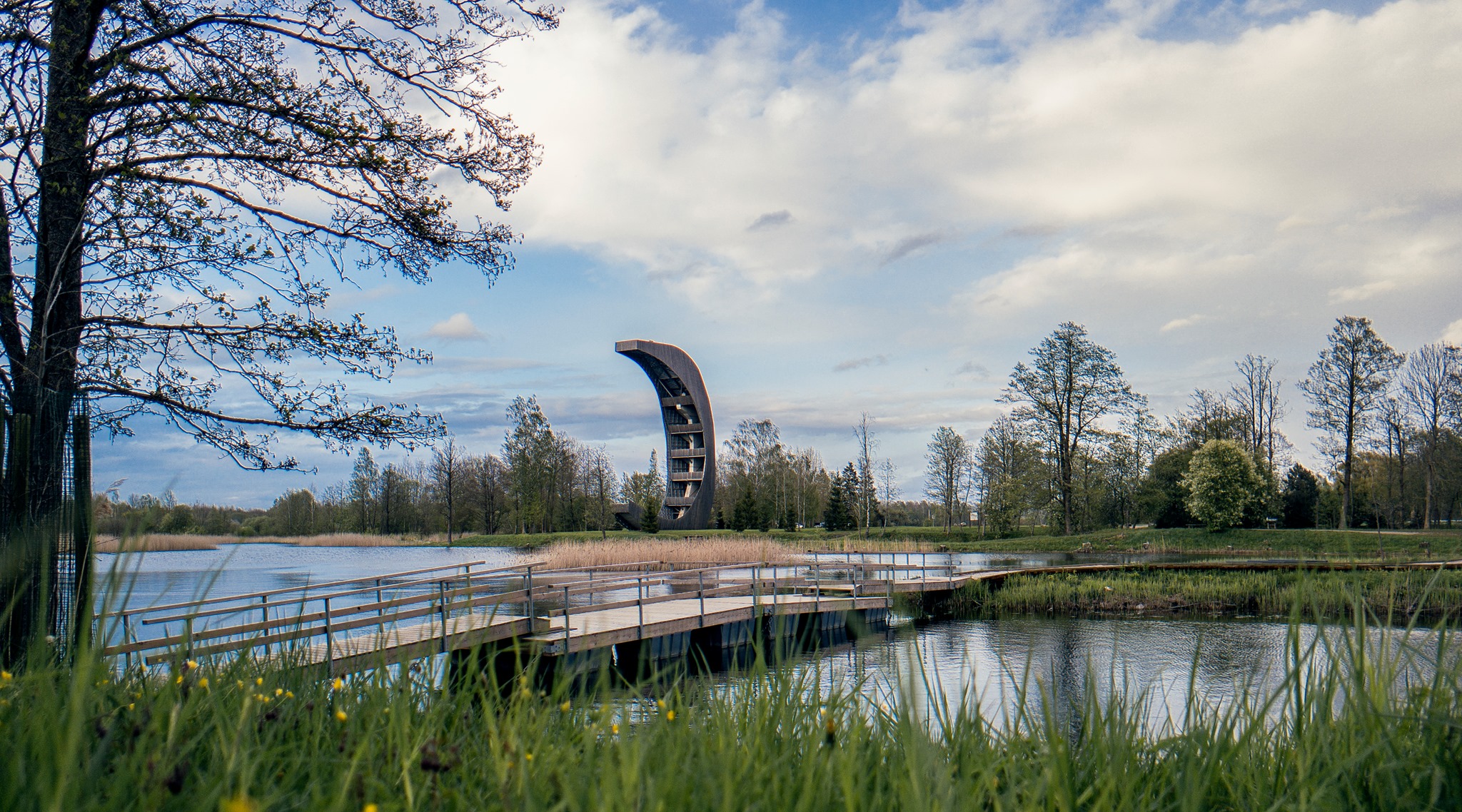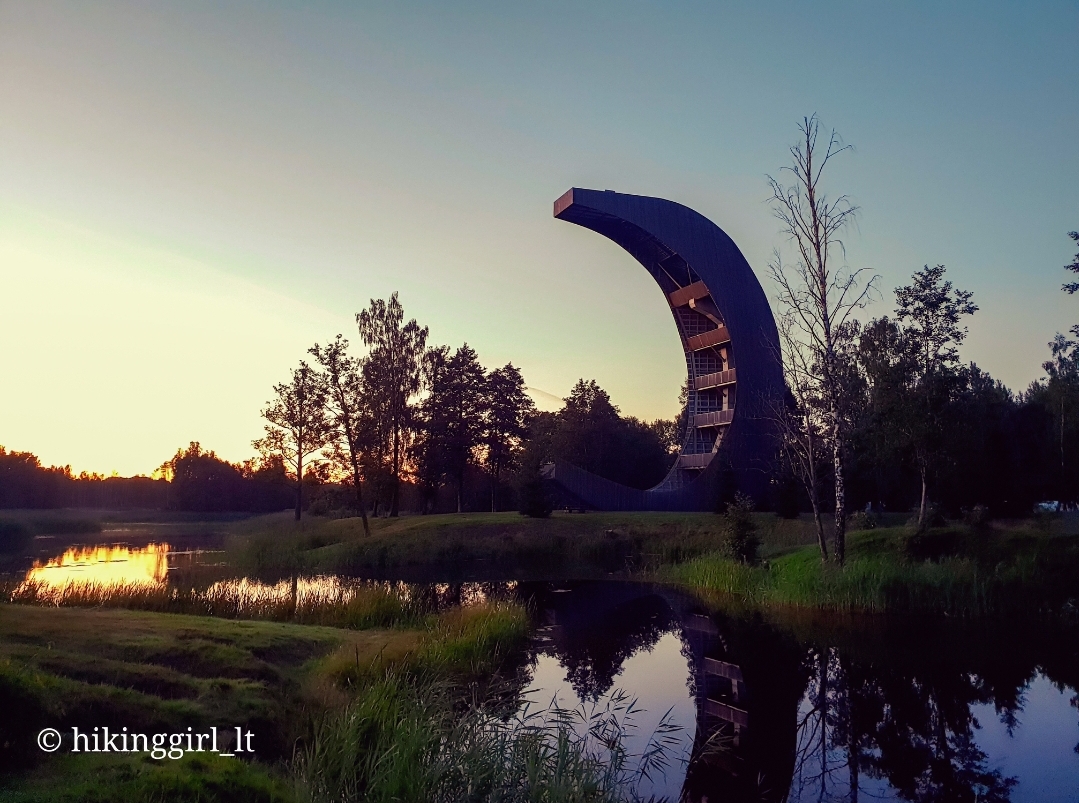The Kirkilai karst lakes are a unique natural phenomenon in Lithuania, renowned for their stunning landscape. The largest of these is Kirkilai Lake (also known as the Long Lake), which is the largest karst lake in Lithuania, covering an area of 3.9 hectares. This lake consists of 30 interconnected sinkholes, creating a distinctive water body. The deepest part of the lake reaches 6.3 meters, with a width of approximately 120 meters and a length of 410 meters.
During dry seasons, the water level in the lakes decreases, causing some sinkholes to become separate lakes, which reconnect in rainy years. These karst lakes are captivating with their winding shores, scenic peninsulas, coves, and islands, offering a unique natural beauty. The Kirkilai lake district is a singular landscape feature, the only one of its kind in the Baltic region.
Located within the Biržai Regional Park, near the Kirkilai karst lakes, stands an impressive observation tower resembling a canoe or a sinking boat. This nearly 32-meter-high tower is a unique architectural marvel, providing the opportunity to admire the natural beauty of Biržai Regional Park.
At the top of the tower, 30 meters high,
is an observation deck covering 30 square meters. On the first floor of the tower, you will also find an amphitheater with an area of 27.75 square meters. It is a great spot for events, meetings, or simply relaxing. The tower was constructed to give visitors a closer look at the unique relief of the Kirkilai Landscape Reserve.
From the tower, you can enjoy stunning views of the 30 water-filled sinkholes, known as the Kirkilai Reserve lakes. The diameter of these lakes ranges from about 35 meters and more. During summer, under certain conditions, the lakes can display a variety of colors, offering an unforgettable spectacle.
Adjacent to the observation tower is an interpretative trail with pontoon bridges, allowing visitors to immerse themselves in the world of these unique water bodies. The trail winds through small marshes and peninsulas, covered with typical marsh vegetation and wildlife.
The interpretative trail leads to a footbridge that crosses to the other side of the lakes. From the footbridge, you can observe colonies of purple sulfur bacteria living in the lakes, which give the lakes their unique appearance. The trail is approximately 800 meters long.










 Entertainment
Entertainment
 Food establishments
Food establishments





























 56.248459, 24.690591
56.248459, 24.690591
 Get directions
Get directions













